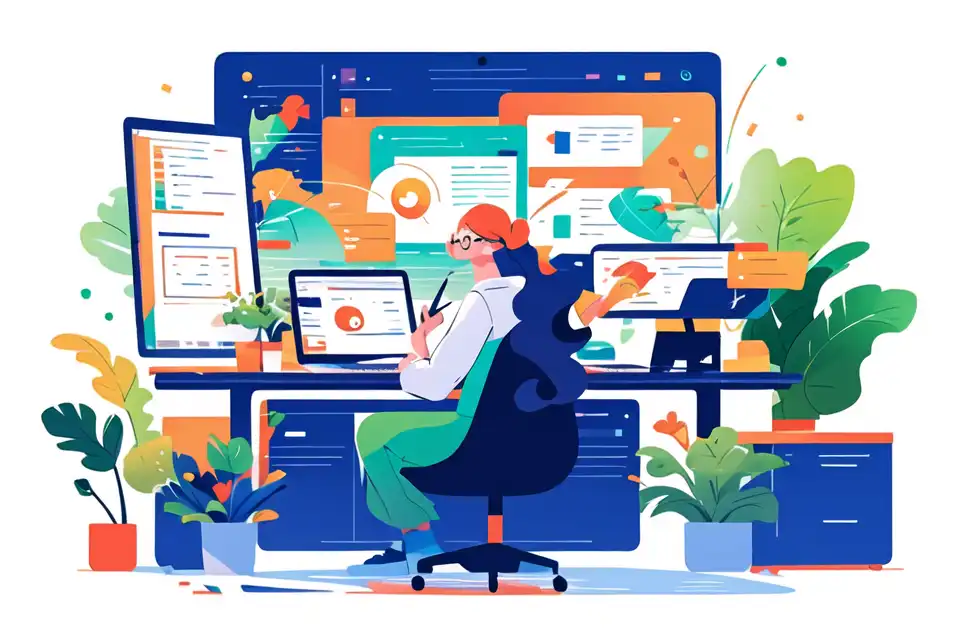IT Mobile Device Management
Learn about the top tips and strategies in IT mobile device management.
Try Lark for Free
Welcome to a world where the boundaries between the digital and physical are blurred. Today's businesses are increasingly reliant on mobile devices to drive productivity and innovation. But, with this surge in mobile device usage comes the need for effective management. This is where IT Mobile Device Management (MDM) steps up, serving as the linchpin for secure, efficient, and seamless operations in a mobile-first world. Today, we delve into this transformative technology, exploring its ins and outs, and how it can redefine the way businesses operate.
"Unlock the power of Lark to elevate your business operations."
Understanding it mobile device management
Defining IT Mobile Device Management
IT Mobile Device Management, or MDM, refers to the administration of mobile devices, such as smartphones, tablets, and laptops, within a corporate environment. It's a crucial part of enterprise mobility management and involves the use and optimization of security software to monitor, manage, and secure employees' mobile devices that are deployed across multiple mobile service providers and across multiple mobile operating systems being used in the organization.
Significance in Today's Technological Landscape
In the era of digital transformation, MDM has emerged as a cornerstone technology. As more businesses adopt Bring Your Own Device (BYOD) policies, the need to secure and manage these devices has skyrocketed. According to a survey by Cisco, 95% of organizations allow personal devices in the workplace. This statistic highlights the need for effective MDM solutions to ensure data security, improve productivity, and enhance user experience.
The role of it mobile device management
Impact on IT Operations and Strategy
MDM plays a pivotal role in shaping IT operations and strategies. It enables businesses to enforce security policies, manage app distribution, and configure settings remotely. It also allows IT teams to track device location, lock devices remotely, and even wipe data if a device is lost or stolen—ensuring that sensitive corporate information is always secure.
Benefits for Organizations and IT Professionals
MDM offers a host of benefits for organizations and IT professionals alike. It enhances data security, improves operational efficiency, and enables a mobile workforce. Moreover, it helps IT professionals to manage complex environments, streamline processes, and ensure compliance with data protection regulations.
Learn more about Lark can help you with everything mentioned in the article.
Implementing it mobile device management
Steps to Integrate
The integration of MDM into existing IT systems involves several steps, including the identification of business needs, selection of an MDM solution, preparation of the IT environment, implementation, and ongoing management and optimization.
Best Practices and Methodologies
Adopting MDM best practices and methodologies can ensure a successful implementation. These include conducting a thorough needs assessment, developing a clear policy, educating employees, and regularly reviewing and updating the MDM strategy.
Technological considerations for it mobile device management
Tools and Platforms
There is a wide range of MDM tools and platforms available, each offering different features and functionality. The choice of tool should be based on business needs and compatibility with existing systems.
Compatibility and Integration with Existing Systems
Ensuring compatibility and smooth integration of MDM tools with existing systems is crucial. It involves checking system requirements, conducting tests, and working closely with the MDM provider during the implementation phase.
Learn more about Lark can help you with everything mentioned in the article.
Real world applications: case studies
The application of MDM in the real world provides valuable insights. Case studies reveal how businesses have successfully adopted MDM, the challenges they faced, and the benefits they reaped.
Challenges and solutions in it mobile device management
Common Obstacles and Risks
Like any technology, MDM comes with its own set of challenges and risks. These include device compatibility issues, user resistance, data privacy concerns, and the risk of data breaches.
Mitigation Strategies and Solutions
Addressing these challenges involves deploying robust security measures, ensuring compliance with privacy laws, educating users, and regularly monitoring and updating the MDM system.
Learn more about Lark can help you with everything mentioned in the article.
Future of it mobile device management
The future of MDM is influenced by emerging technologies and trends, such as the Internet of Things (IoT), Artificial Intelligence (AI), and 5G. To stay ahead, businesses should keep abreast of these developments and adapt their MDM strategies accordingly.
Conclusion
MDM is a game-changer in the IT landscape, driving security, efficiency, and productivity in today's mobile-centric world. As we look to the future, the importance of MDM is set to increase, making it an essential component of any successful IT strategy.
Learn more about Lark can help you with everything mentioned in the article.
Faqs
This section answers the most common questions about MDM, providing a wealth of information for anyone interested in this transformative technology.
Do’s and don’ts for it mobile device management
This section provides a comprehensive guide to the dos and don’ts of MDM, offering valuable insights for a successful implementation.
"Unlock the power of Lark to elevate your business operations."








